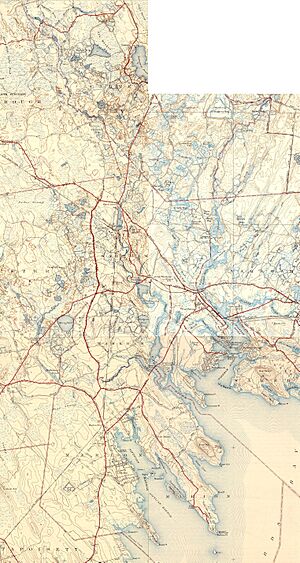Weweantic River facts for kids
The Weweantic River is a river in southeastern Massachusetts. It's about 17 miles (27 kilometers) long. The name "Weweantic" comes from the Wampanoag language, and it means "crooked" or "wandering stream." This name perfectly describes how the river winds and turns!
Contents
What is the Weweantic River?
The Weweantic River is a natural waterway that flows through several towns. It starts in wet areas in Carver. From there, it winds its way south. It passes through forests in Middleborough and Rochester. These forests have many birch and maple trees.
The river eventually flows into a part of Buzzards Bay in Wareham. This is near where the Sippican River also meets the bay. The entire area that collects water for the Weweantic River is huge. It covers about 18,000 acres (73 square kilometers). Many cranberry farms are found near the river's beginning.
Animals and Plants of the River
The Weweantic River used to be full of life. It was home to many different kinds of fish and shellfish. Shellfish are creatures like clams and oysters. They live in the water and have shells.
Why Are There Fewer Fish?
Today, the river does not have many herring fish. Herring are a type of fish that swim from the ocean into rivers to lay their eggs. This is called spawning. A dam below a place called Horseshoe Pond blocks their path. Because of this dam, the herring cannot reach their usual spawning grounds. This makes it hard for their population to grow.
Why Can't We Collect Shellfish?
Sadly, people are not allowed to collect shellfish from the Weweantic River anymore. This is because of something called bacterial contamination. This means there are too many germs (bacteria) in the water. These germs can make people sick if they eat the shellfish. Scientists and local groups are working to make the river cleaner. They want to make it safe for both animals and people again.


